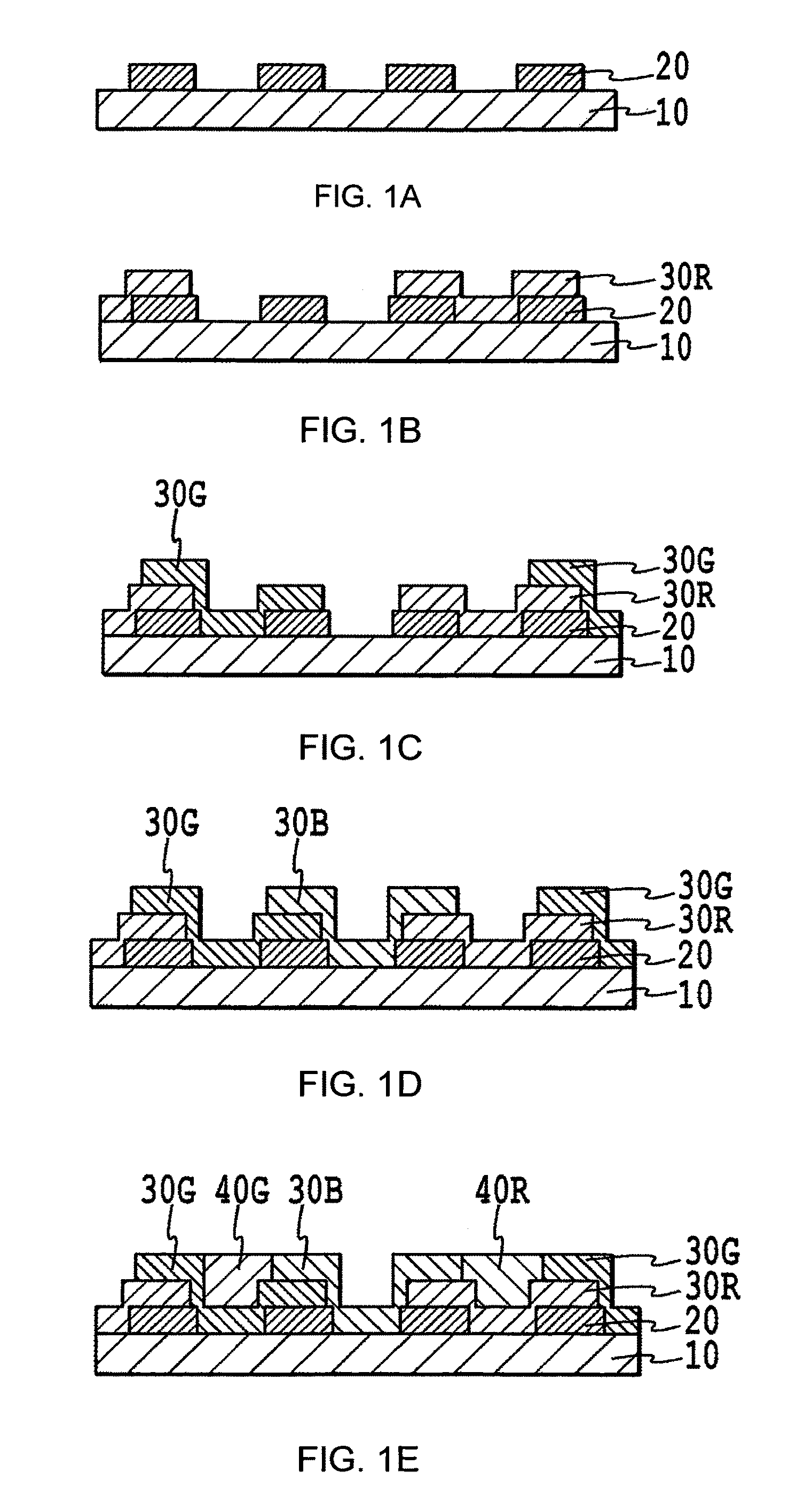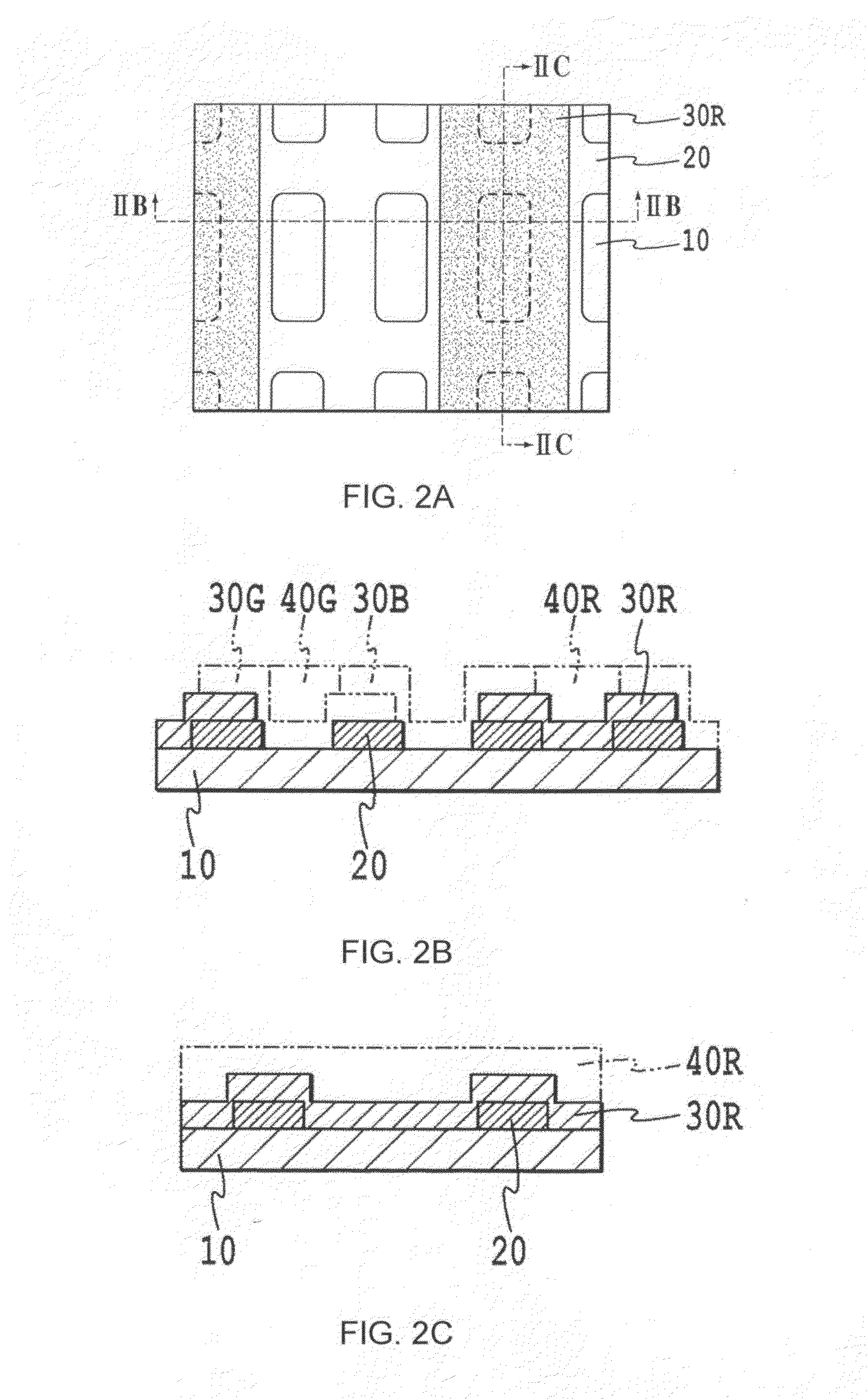Color conversion filter and manufacturing method of the organic EL display
a technology of color conversion filter and organic el, which is applied in the direction of optical elements, instruments, coatings, etc., can solve the problems of insufficient conversion light intensity, breakage of lines, and reduced absorption of light to be absorbed, so as to prevent ink diffusion
- Summary
- Abstract
- Description
- Claims
- Application Information
AI Technical Summary
Benefits of technology
Problems solved by technology
Method used
Image
Examples
example 1
Color Conversion Filter
[0115]Color Mosaic CK-7001 (manufactured by Fuji Film Electronic Materials, Co., Ltd.) was applied onto 1737 glass (manufactured by Corning Inc.) 200 mm in length by 200 mm in width by 0.7 mm thick, and photolithography was used to form a black matrix having a plurality of rectangular openings. The black matrix had a film thickness of 1 μm. Each of the rectangular openings, equivalent to subpixels, was 131 μm in the length direction and 37 μm in the width direction, and the intervals between adjacent rectangular openings were 10 μm in both the length and width directions.
[0116]Next, Color Mosaic CK-7001 (manufactured by Fuji Film Electronic Materials, Co., Ltd.) was applied, and photolithography used, to form a red color filter layer comprising a plurality of stripe-shape portions extending in the length direction. Each of the plurality of stripe-shape portions was formed so as to overlap with portions of the adjacent black matrix extending in the length direc...
example 2
[0129]Except for the fact that the film thickness of the black matrix was made 2 μm, the procedure of Example 1 was repeated to manufacture an organic EL display. In the intermediate structure of the color filter in this example, the barrier walls formed by layering two types of color filter layers in portions of the black matrix extending in the length direction each have a height of 3 μm.
example 3
[0130]Except for the facts that the film thickness of the black matrix was made 2.5 μm, and that the film thickness of each of the color filter layers (R, G, B) was made 1.5 μm, the procedure of Example 1 was repeated to manufacture an organic EL display. In the intermediate structure of the color filter in this example, the barrier walls formed by layering two types of color filter layers in portions of the black matrix extending in the length direction each have a height of 4 μm.
PUM
 Login to View More
Login to View More Abstract
Description
Claims
Application Information
 Login to View More
Login to View More - R&D
- Intellectual Property
- Life Sciences
- Materials
- Tech Scout
- Unparalleled Data Quality
- Higher Quality Content
- 60% Fewer Hallucinations
Browse by: Latest US Patents, China's latest patents, Technical Efficacy Thesaurus, Application Domain, Technology Topic, Popular Technical Reports.
© 2025 PatSnap. All rights reserved.Legal|Privacy policy|Modern Slavery Act Transparency Statement|Sitemap|About US| Contact US: help@patsnap.com



